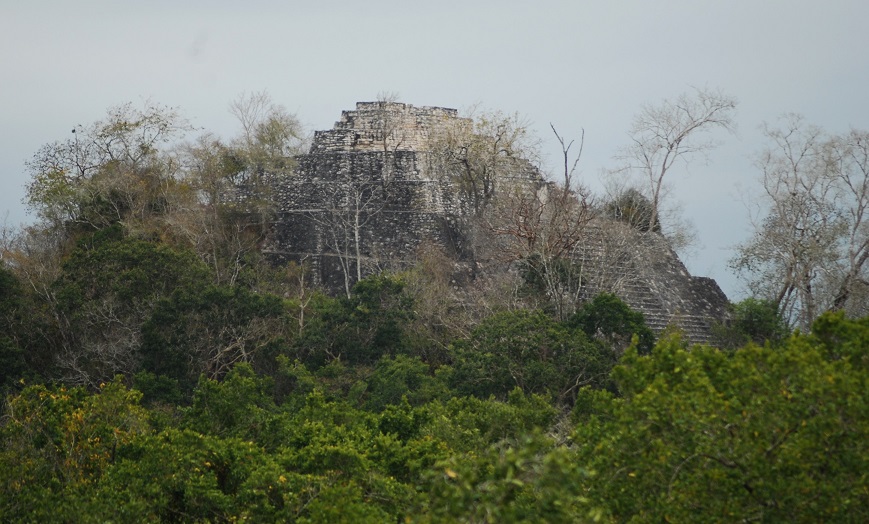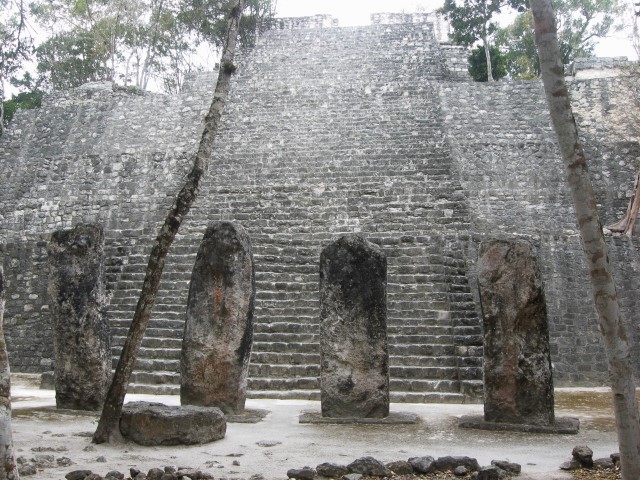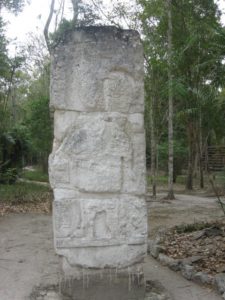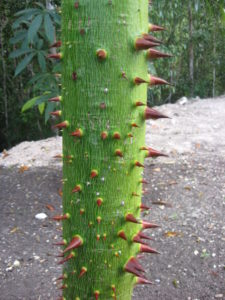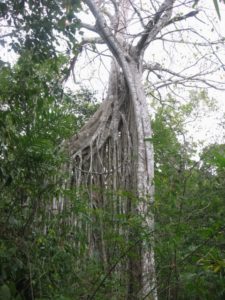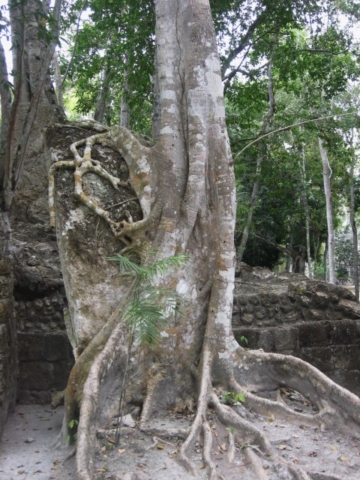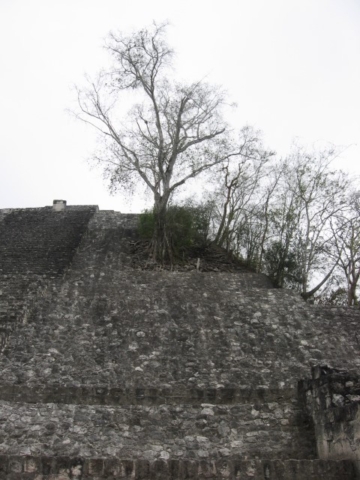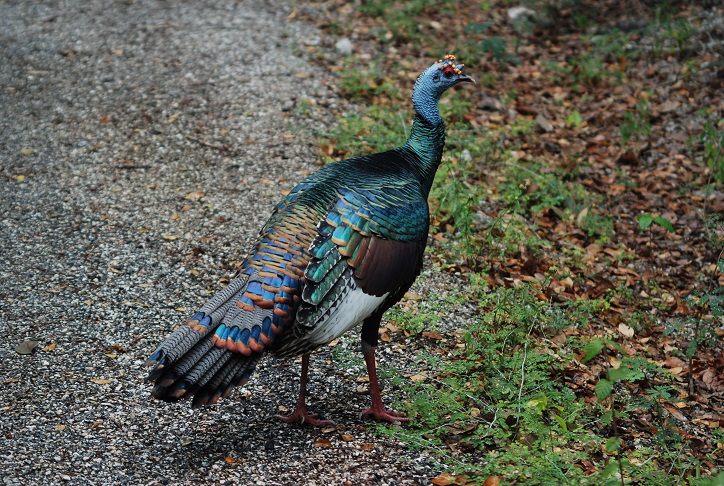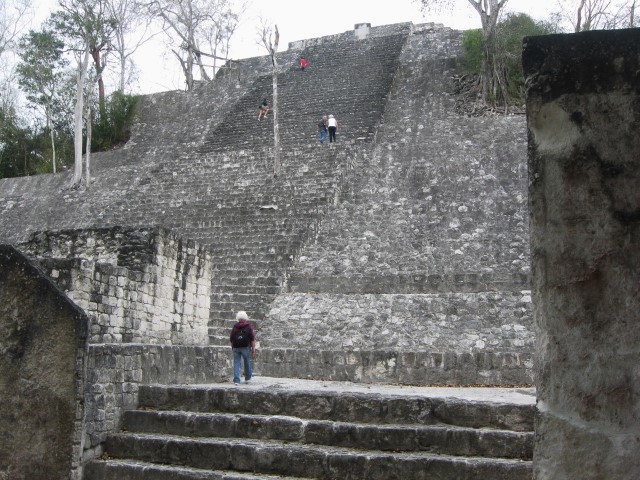
Ruta Maya – Part 11
This is Part 11 of a series of articles on the Aztec and Mayan pyramids and ruins in Central America. Updated Sep 2022.
Calakmul – Mayan City
Calakmul is a large Mayan site in a remote area of southern Mexico, just 35 km north of the Guatemala border. It was one of the largest and most powerful Mayan cities. About 50,000 people lived here. There were 6,750 structures, but most were small and unimportant and are now just piles of rocks. There are three large pyramids, the tallest of which is more than 45 metres (148 feet). The size of the site was approximately 70 square kilometres, but most of that was residential structures which have long since disappeared. The site now covers about 20 sq km.
Calakmul and Tikal
Calakmul had an on-and-off relationship with Tikal, another large Mayan city to the south in what is now Guatemala. They were friends, but they were often at war with each other.
Both cities sought to be the most powerful in the Mayan civilization. In the 6th and 7th centuries, Calakmul was the more dominant city, but Tikal beat Calakmul in battle in 695. Afterwards, Tikal was the more important city. Both cities, like all other Mayan cities, collapsed and were abandoned. Most Mayan cities were abandoned by the 1500s. There are several theories as to the reason for the collapse, but there is no proof.
In modern times, a biologist in an aircraft rediscovered Calakmul in 1931. This remote jungle area in the Mexican state of Campeche was once one of the most populated cities in the Mayan empire. The rural Mayan population around Calakmul is estimated to have been 1.75 million. Today, southern Campeche and northern Guatemala are mostly jungle with few towns.
Stela
Many structures had stela in front of them (spelt correctly with one L, the plural is stelae). A stela was like a political billboard. It is a huge rock that is positioned upright and had carvings on it. Some of them had pictures of kings, others of famous warriors, priests, and other important people. Some had depictions of their gods and images of battles. However, the carvings on most of them are now so weatherworn that the pictures are no longer visible. The stelae must have been beautiful and elegant when they were new, as well as significant objects to the city’s glory.
The best of the stelae from several different Mayan cities have been moved to the Museum of Anthropology in Mexico City. There is a post about this museum as part of my Ruta Maya series. Click here.
Trees
The trees in Calakmul are fascinating. Many of them are twisted and have strange formations. Some of them are wrapped around stela or growing out of a pyramid. Of course, the citizens of Calakmul would not have allowed trees to grow on their buildings or stela. I saw one bright green tree that was covered in red spikes.
The jungle is a very interesting place in its own right.
Calakmul Birds
The ruins are excellent places to find birds, and I go to many of them to see the birds and to see the ruins themselves.
In Calakmul, we saw Ocellated Turkey, a more colourful version of wild turkeys found in the USA and Canada. The body is blue and black and green. Tips of the feathers are blue, green and gold. The wings are florescent turquoise, white, black and metallic copper. The featherless head is blue and covered with large orange warts. It is quite a bird. This is the only place in Mexico where they are found. They were common in previous times but have been hunted out in locations outside of parks. They can also be seen in remote parts of Belize and Guatemala. I saw them before in a remote area of Belize near the Guatemalan border and Peten, Guatemala.
Some other great birds that you might be able to see at Calakmul include the Great Curassow, the stunning Painted Bunting and the magnificent Ornate Hawk Eagle.
Calakmul Biosphere Reserve & UNESCO World Heritage Site
The Mayan site of Calakmul is now within the Calakmul Biosphere Reserve. The reserve covers an area of 7,231 sq km, about 12% of the tropical jungle of southern Mexico. It was established in 1989. The reserve is home to five species of cats, including jaguar, jaguarundi and ocelot; two species of monkeys, tapirs and many other animals. However, most are rarely seen.
The reserve was designated a United Nations World Heritage Site in 2002. World Heritage Sites are protected areas to preserve places and objects (both natural and manufactured) that are very important for future generations. This site, together with Petan in northern Guatemala, is the only remaining large tract of undisturbed tropical jungle left north of South America. It preserves the Mayan ruins, rare birds, and many other animals like the jaguar.
Conhuas
The village of Conhuas, where we stayed, is near the entrance to the Calakmul Biosphere Reserve. It is the closest place with accommodations. Still, from the reserve gate to the ruins is another 65 kilometres, much of it on a narrow windy road with a speed limit of 30 kph. We made several stops to look for birds, so it took us three hours to reach the ruins from the gate. If you speed and don’t stop for the birds, it could be done in less than two hours. This gave us an appreciation of the immense size of the place.
To get to Conhuas, I suggest renting a car at Chetumal. If you are coming from another country, fly to Cancun, then take a bus to Chetumal.
Conclusion
Calakmul is a fascinating place. Most visitors to Mexico visit tourist resorts such as Cancun, Acapulco and Cabo San Lucas. At Calakmul, you could see an ancient Mayan city with pyramids located in a remote and mostly uninhabited tropical jungle with opportunities to see rare birds and other wildlife. Get off the beaten path, away from the crowds, and you will be rewarded with unique experiences that most people never see.
Click here for a list of all the sites on the Ruta Maya
